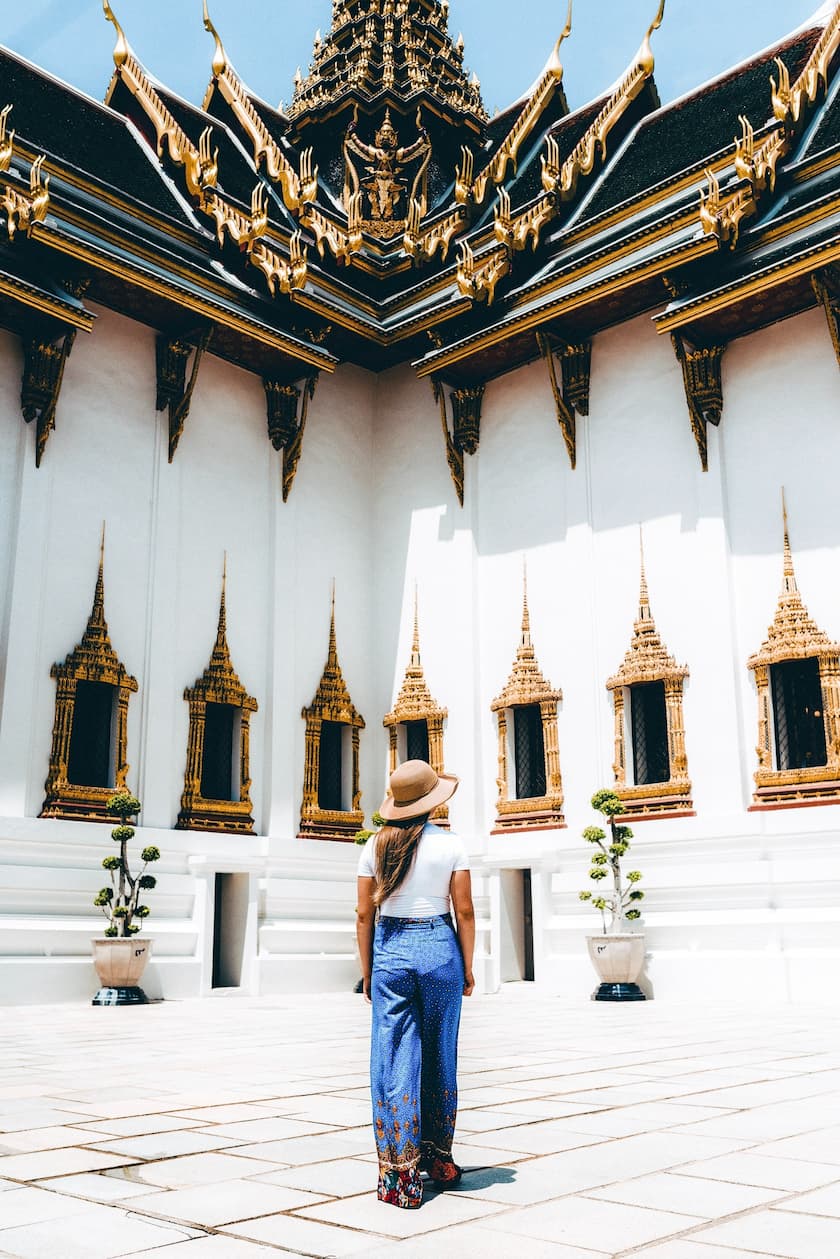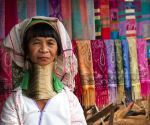Museums in Bangkok
Bangkok has a rich history and this is borne out by the number of museums in and around the city. There are more than 100 museums in Bangkok to visit on your travels, giving insight into the growth and development of the country’s capital, the people, their traditions and the culture of this fascinating region. These are some of the museums to consider when visiting Bangkok.

Bangkok's Museums
Bangkok National Museum
The Bangkok National Museum is one of the largest museums in Southeast Asia, dating back to the 1870s when King Rama V allowed public viewing of a private collection belonging to his father, King Rama IV. It showcases the history of the Thai people and contains exhibits of artefacts covering several notable periods in the country’s history.
The museum houses three permanent exhibitions: the Thai History Gallery, the Decorative Arts and Ethnological Collection, and the Archaeological and Art History Collection. Several of the museum buildings have historical significance, most notably the Buddhaisawan Temple, and the Red House, a teak structure showcasing original period furnishings.
The museum is located in Phra Nakon. It’s within walking distance of the Grand Palace and Wat Phra Kaew, the Emerald Buddha, both popular attractions for local and international visitors.
Royal Thai Air Force Museum
Thailand’s Royal Thai Air Force Museum is in the Don Mueang District, about 35 minutes from the Akyra Thonglor Hotel. It opened in 1952 and was established to restore and preserve aircraft and aviation equipment used by the Royal Thai Air Force. There are more than 60 aircraft on display, the likes of which include a spitfire, Curtiss Hawk III and one of the last Vought O2U Corsairs in existence.
Although not expansive, the museum consists of five buildings that showcase the history of Thai aviation with exhibits of maintenance equipment and Thai Air Force uniforms through the ages. One of the buildings features a hypobaric chamber that simulates low air pressure, while another contains an exhibition of helicopters, including a Bell 212 Royal helicopter.
Museum Siam
One of the more modern museums in Bangkok is Museum Siam, located close to Wat Pho and about 15km from the Akyra Thonglor. The museum traces the evolution of Thailand and the Thai people, their culture and traditions from past to present.
Each room within the museum has a different theme, so you gain an understanding of things like Thai politics, past history, relationships with neighbouring countries and its adoption of western ideas. The multi-media displays and interactive exhibitions showcase the country’s “Thainess”, and you’ll leave with a better understanding of the Thai nation.
Police Museum Parutsakawan Palace
The Police Museum began as a storage facility at the Royal Thai Police Academy, for evidence from crimes that could be used to gain understanding into other investigations, and for learning purposes. The evidence mounted up and subsequently the museum was formed.
The museum is housed in two buildings. The Chitralada Villa comprises two floors with exhibitions showcasing the history of the villa, the People’s Party’s occupation of Parutsakawan Palace, and the King’s Royal duties involving the Royal Thai Police. In the Glass Building you can follow the history of the Royal Thai Police from the Sukhothai period to present day.
Prasart Museum
Prasart Vongsakul turned passion for Thai heritage into a private museum located in Krungthep Kritha, Bangkok. The museum is set in beautifully landscaped, tropical gardens which also provide the setting for authentic examples of traditional Thai architecture.
The range of artefacts exhibited in the museum covers prehistoric periods in Thailand’s history right through to modern day. Items include domestic furnishings, household utensils, ceramic pieces, art and Buddha images. Visitors must book ahead of arrival to secure a spot on one of the tours.
Baan Kudichin Museum
The Baan Kudichin Museum charts the story of Thailand’s relationship with Portugal, and the history of the Thai-Portuguese lineage. It’s located along the Chao Phraya River, a short walk from Wat Arun.
The neighbourhood is traditionally Portuguese, having been gifted to Portuguese and Christian converts before the dawn of the Bangkok we know today. The museum is a place to learn about the local history, culture, language and religion of the Thai-Portuguese people, for many of whom the area is still home.
Thai Film Museum
The Thai Film Museum on Phuttamonthon Sai 5 Road encapsulates the history of film-making in Thailand from the 19th century to present day. The two-storey museum also acts as a memorial to the country’s first film studio, Sri Krung Sound and Film Studio that opened in 1935 but was forced to close around 1942 largely because of WWll.
The museum features exhibits of old film-making equipment and mock-ups of scenes from popular Thai movies. It documents over 100 years of film-making in Thailand in an interactive and appealing way.
Varadis Palace Museum & Library
Varadis Palace was built in 1911 and served as the residence of Prince Damrong Rajanupab, before opening to the public as a museum and library in 1996. The Prince was integral in revamping the Thai civil service and education systems in the late 19thth and early 20th centuries, and served several key roles during his lifetime.
The palace museum displays memorabilia showcasing the work and life of the Prince, and houses old military uniforms, weapons and badges. The 3-storey library contains the Prince’s private collection of over 7,000 journals, newspapers and textbooks.
Royal Thai Army Museum
Although initially built in 1882, the Royal Thai Army Museum in Honour of His Majesty the King only opened to the public over 100 years later. It showcases the development of the Thai Army through the ages.
Each room in the museum focuses on an element of the army’s history: weapons, flag and military equipment, uniform and army history are just some of the topics covered. One of the focus points of the museum is the Phra Barami Pokklao Room which features a life-sized bronze statue of King Chulalongkorn or King Rama V.
Royal Dockyard Museum
The Royal Dockyard Museum opened in 2011. It acts as a source of knowledge for tourists and locals to learn about the shipbuilding industry in Thailand, including the production of warships and barges, through physical and electronic displays and presentations.
The first floor has two zones showcasing the workings of the dockyard and how ships are prepared for battle. Five zones on the second floor cover the full history of the area and shipbuilding process from start to finish.
Pipit Bang Lamphu Museum
The Pipit Bang Lamphu Museum tells the story of Bangkok’s Bang Lamphu neighbourhood through a series of exhibitions and displays. The museum is located in an old printing house and school, now a historical monument, and opened in the early 2000s after extensive restorative work.
The exhibitions showcase the history of Rattanakosin, Bangkok’s old town, with its forts, city gates and walls. You’ll also learn about the Bang Lamphu community, their history, lifestyle and traditions. Because the Treasury Department invested in the restoration of the buildings, a section of the museum is dedicated to their responsibilities, the manufacturing of Thai coins and the measures the department takes in caring for government buildings.
Thai Flag Museum
The privately owned Thai Flag Museum opened in 2006 as a place where visitors’ can learn about the country’s flags, their history and the meaning of the various symbols. It’s the only one of its kind in Thailand, and provides an accurate representation of how the Thai flag has developed through the years. One can also enjoy browsing through other displays of commemorative coins and medals.
Golden Jubilee Museum of Agriculture
The Golden Jubilee Museum of Agriculture in Pathom Thani was built to commemorate King Rama IX’s Golden Jubilee in 1996. It opened to the public in 2002, with a unique architectural design and a mixed-use space that houses the museum, offices, shops and lecture halls.
The intention of the museum is to showcase the King’s vision for sustainable agriculture, which is does through a series of exhibits and interactive displays. The surrounding park provides a serene spot to sit and relax, and take in the natural beauty.
Thai Newspaper Museum
You can explore the history of the press in Thailand at the Thai Newspaper Museum on Ratchasima Road in the Dusit District. The museum opened in 2001 and showcases how the press and newspapers in Thailand have evolved over the decades, and the role that the Thai monarchy played in their development.
One section of the museum focuses on the history of newspapers in Thailand from the reign of King Rama III to King Rama VII, as well as how newspapers were produced and what it was like working for the industry. Elsewhere, you learn about the role of newspapers on a political, social and economic level.
Phaya Thai Palace
The Phaya Thai Palace was intended as a residence for King Rama V and work on the building was completed in 1910, however, he died several months later. The palace was renovated to include a hew Royal Residence that accommodated King Rama VI until 1925. Subsequently, the palace has housed a radio station, and acted as an international hotel and a military hospital.
Phaya Thai Palace was built on part of a large paddy field that King Rama V used for agricultural experiments, and hosted the annual Royal Ploughing Ceremony to mark the start of the rice-growing season. One of the outstanding features of the Phaya Thai Palace is the European-style turret with a cone-like roof that houses the King’s study, bathroom and bedroom, and a throne hall.
Thai State Attorney Museum
The Thai State Attorney Museum houses one of the most complete collections of law books in Thailand, and is widely believed to be the first legal museum in the country. Visitors to the museum can view these books as well as exhibitions detailing the history of the Thai State Attorney.
Also on display are archived files from significant historical law cases, like that of Sherry Ann Duncan murder in 1986, and the 1976 Thammasat University Massacre. You’ll find the museum in building of the Office of the Attorney General on Ratchadaphisek Road.
King Prajadhipok Residence Museum
King Prajadhipok ruled in Thailand as King Rama VII from 1925 for a little under ten years. At the time, the nation was experiencing a period of political uncertainty and financial strain, with the world trying hard to recover from the Great Depression. The King worked tirelessly to improve the country’s situation, but ultimately abdicated in a move that paved the way for a constitutional monarchy in Thailand.
The museum opened in 2002 and is housed in a neo-colonial building in Pom Prap Sattru Phai district, about 30 minutes from the Akyra Thonglor. Each of the three levels in the museum tells a story about the King and Queen, detailing their early years and the King’s reign. Exhibitions of the King’s personal items contribute to a better understanding of him as a person, a royal and the country’s figurehead.
Debsirin School Living Museum
The Debsirin School in Pom Prap Sattru Phai is a boys’ government school founded by King Rama V in 1885. Although still an active school, it opened as a living museum in 2012, showcasing its rich history through memorabilia and the lives of the school’s various founders and supporters.
A wander along the ground and first floor passages will lead you to an exhibition on the development of education in Siam and, more specifically, at the school. Through video-mapping technology, you can see how the school has developed over the years, from pre-war times to present day.
Khlong San District Museum
This small district museum is located in the library building of the Wat Anongkharam, just off the Somdet Chao Phraya Road. The museum gives a potted history of the Khlong San district and early commercial activities, including how Khlong San developed through the mid to late 1800s as a port for trade.
One of the four sections showcases biographies and exhibits about famous residents from the area, while the last section is dedicated to the Princess Mother, who at one time also resided in the district.
Thai Human Imagery Museum
The Thai Human Imagery Museum is modelled on the world-famous Madame Tussauds, which displays wax models of famous people. The displays in this museum are constructed from fibreglass, which is better suited to the high temperatures in Bangkok.
The museum is well laid out, with displays based on various topics: History, Famous Monks, Lifestyle, Famous People, Rama V and the Abolition of Slavery, Sunthorn Phu’s Phra Aphai Mani, and Thai Children’s Games.
We’ve barely scratched the surface of museums in Bangkok. You can read about more of these interesting historical places in our articles on Museums of Art, Culture and Architecture; Science, Nature and Technology Museums; and Interesting Museums.
Bangkok Museums Map
Related Articles
- Interesting & Unusual Museums in Bangkok
- Museums of Arts, Culture and Architecture in Bangkok
- Science & Nature Museums in Bangkok
- Locals’ Favourites in Bangkok
- Bangkok Suvarnabhumi Airport Guide
Others Blog
Latest Post
The Karen Hill Tribes of Chiang Mai
22/04/24Extend Your Stay in Chiang Mai
01/04/24



